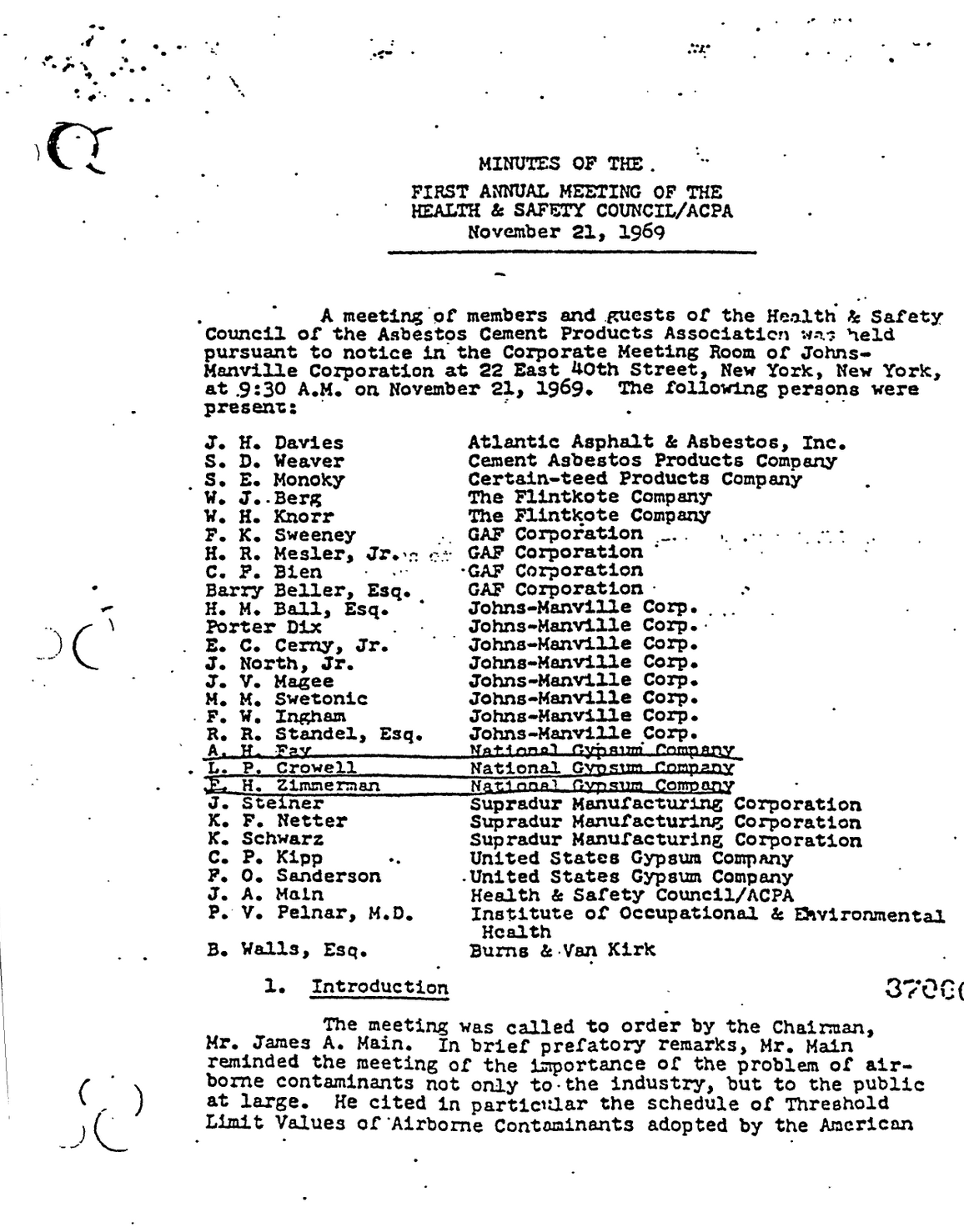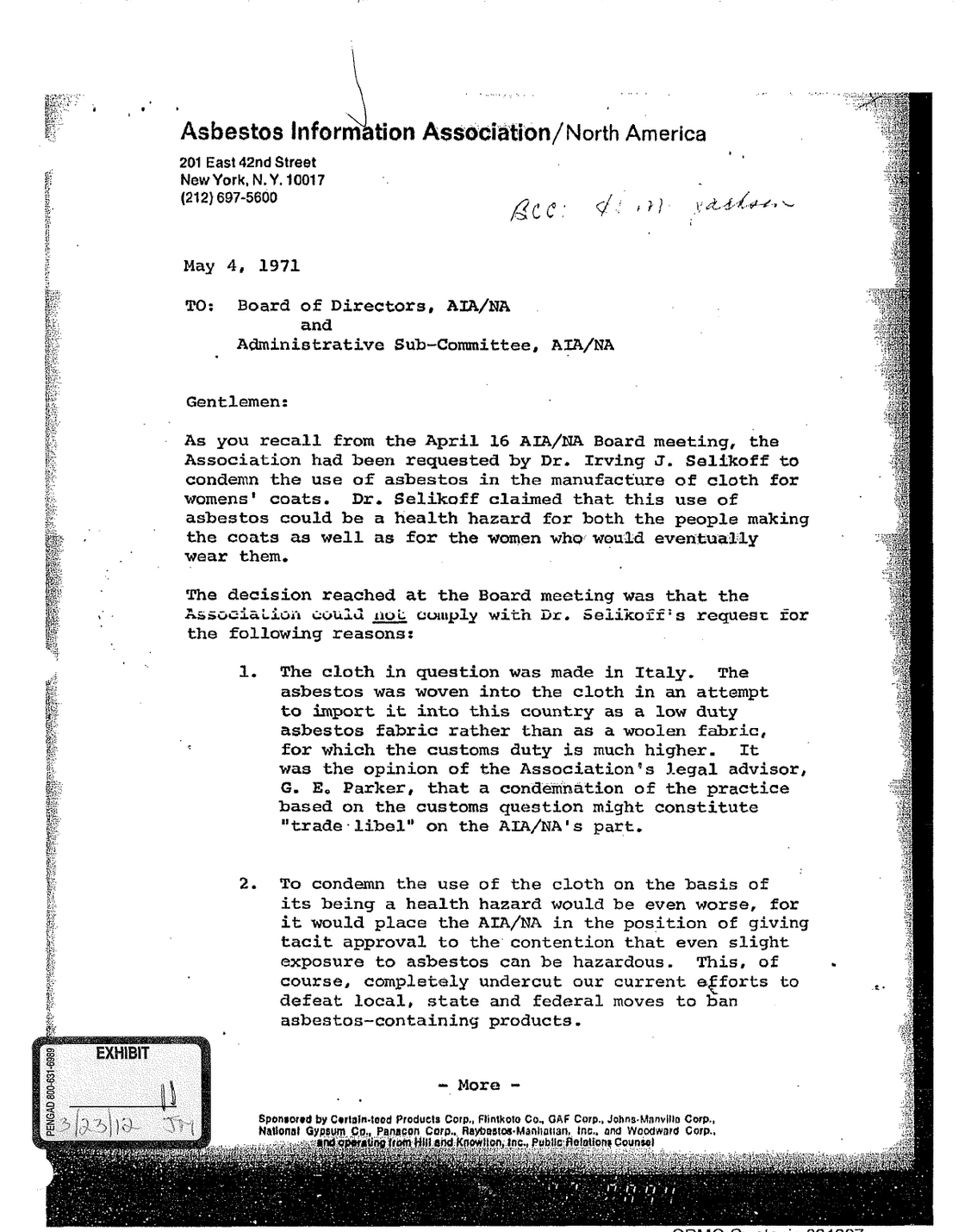Asbestos and Trade Associations
Machaela Parkin
I chose to read the minutes of the first annual meeting of the Asbestos Cement Products Assocation from 1969 (3-23-2012 Ex. 02 ACPA November 21 1969-1), a 1970 meeting report from the Environmental Health Task Force (3-23-2012 Ex. 03 Env Health Task force October 1970), and a 1971 letter from the Asbestos Information Association (Ex. 11 AIA Re Selikoff May 1971-1). One of the main points that stuck with me as I was reading through the documents I chose was the extent to which the corporate interests involved were willing to intentionally deceive consumers and put people’s health at risk in order to generate a higher profit. This was clear in all of the documents I read.

In the letter from the Environmental Task Force, the Sub-Committee on Public Relations was more concerned with how “the banning of asbestos problems is becoming a serious problem for the industry,” rather than expressing concern for how asbestos was impacting public health. The language used in the minutes from the ACPA meeting was even more insidious. In this document, Mr. Ball, from the Johns-Manville Corporation, claimed that “carefully worded pamphlets” should be distributed to users of the products, and warnings should be placed on the products that state that there “may be a health hazard” related to the products but also “negate any implication that the products in themselves once installed are dangerous in this regard.” All of this was done with the intention of reducing to the greatest extent possible any responsibility connected to the manufacturers of the products.

The original use of asbestos in many products was also explicitly connected to a desire to generate more profit at the expense of human health. In the 1971 letter from the Asbestos Information Association about the manufacturing of women’s coats, it was stated that the original purpose of using asbestos was to reduce customs duties on imported coats because the “low duty asbestos fabric” was more profitable to import. Although the hazards of asbestos were made clear, the Association claimed that they were unable to comply because they would lose profits and because “to condemn the use of the cloth on the basis of its being a health hazard would be even worse, for it would place the AIA/NA in the position of giving tacit approval to the contention that even slight exposure to asbestos can be hazardous.” All of these documents provide direct evidence to support the claim that asbestos manufactures were intentionally hiding the risks of asbestos to the general public in favor of corporate interests.
